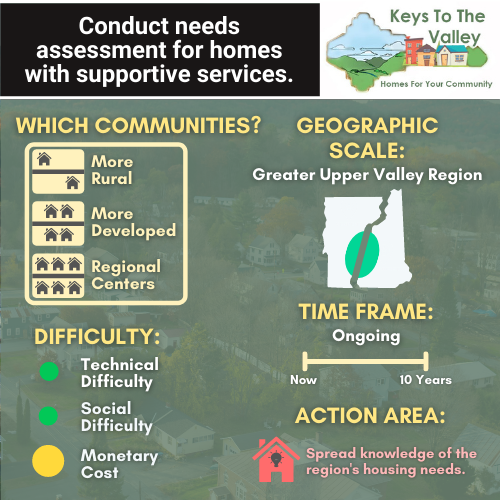Homes with supportive services provide a safe home (transitional or permanent) in conjunction with needed services (such as vocational training, mental health care, addiction services, life skills services). These homes come in the form of both independent and group living. Supportive services may be provided in a single facility or across a broader area. This diversity of services and housing types only heightens the need for more robust information on the capacity and need for homes with supportive services in the region. A general picture is provided in our summary report on Emergency Housing and Homes with Supportive Services.
Providers of homes with supportive services are in agreement – more homes with supportive services are needed in the region. The extent and specifics of that need is less certain. A thorough and regularly-updated study of needs for homes with supportive services would better inform communities and providers, as well as guide funding to maintain and create new homes with supportive services. This study should include an assessment of:
- The number of people currently on waiting lists and for how long;
- The number of people turned away from or required to wait for emergency mental health services;
- Evaluation of the coordination occurring between those who first identify people in need of homes with supportive services (such as emergency hospital departments, support groups, prisons) and providers of those homes; and
- The number of people who might benefit from homes with supportive services but do not currently use it and why (such as cost, stigma, awareness).


